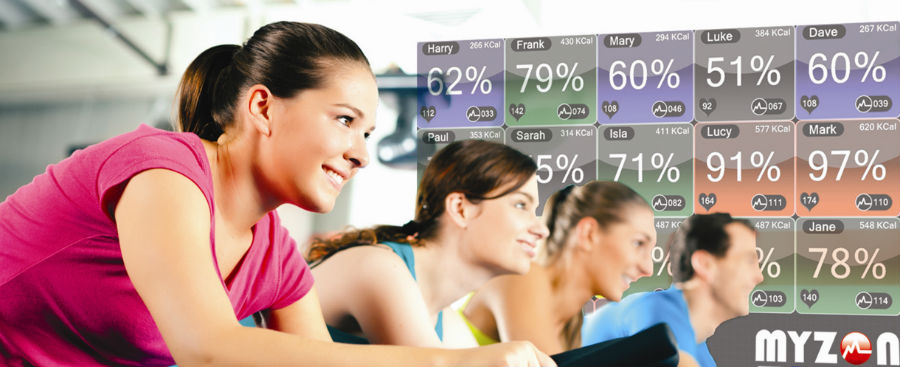 By Emily Sopo, Special AFS Contributor
By Emily Sopo, Special AFS Contributor
Whether or not they admit it to you, most clients and studio/club members care about calories. Has someone at your facility ever asked any of the following:
“Are the calories on this treadmill/elliptical/bike accurate?”
“How does this equipment know how many calories I burn during my workout?”
“This piece of equipment says I burned 600 calories. Is that right?”
If so, you know that it can be difficult to explain caloric expenditure to clients and club members. Measuring caloric expenditure is a complex science not easily described in a quick post-workout conversation. Here is some background information on methods of measuring caloric expenditure that will help you to answer your clients’ questions.
There are many different ways you can measure your clients’ caloric expenditure. However, as you might expect, the most accurate and reliable methods are very time-and resource-intensive and are not realistic methods to be used in most commercial fitness settings, while the methods that are more convenient and accessible tend to be are less accurate and reliable.
Here are a few methods of estimating caloric expenditure that you may have heard of or used yourself:
- Open-circuit Spirometry using a Metabolic Cart: One of the most accurate techniques for measuring caloric expenditure during exercise, this method is commonly used in laboratory settings. An exerciser performs cardiorespiratory exercise while wearing a facemask connected to a metabolic measurement system. This process allows you to measure the amount of oxygen utilized by the exerciser to produce energy aerobically (known as oxygen consumption or VO2). A measurement of exercise intensity, VO2 is then used to calculate caloric expenditure. Your facility may offer metabolic (or VO2) testing to measure clients’ cardiorespiratory fitness, but it is not commonly used to measure caloric expenditure outside of a research lab.
- Pedometers & Accelerometers: These motion sensor technologies are typically used to track steps and distance traveled, but many also offer a caloric expenditure estimate. Pedometers and accelerometers are limited in their ability to differentiate types of exercise, body parts utilized, and exercise intensity.
- Commercial Gym Equipment: If you’ve used a treadmill, elliptical, cycle ergometer, or rowing ergometer lately, you’ve probably seen an estimate of your caloric expenditure displayed during your workout. Cardiorespiratory exercise equipment is often pre-programmed with an algorithm based on previous research that measured caloric expenditure using a sample population. The equation may take into account your client’s gender, weight and age, as well as how quickly they are performing activity. But what if your client is not identical to the sample population used to develop the algorithm? There is an inherent level of inaccuracy in caloric expenditure estimates using gym equipment. Plus, all feedback is limited to exercise performed on a specific piece of equipment.
We must remember that caloric expenditure is determined by many factors, including your client’s body dimensions, age, fitness level, and body composition (fat mass and fat-free mass). Since accelerometers, pedometers and gym equipment cannot actually tell what’s happening inside your client’s body, your client probably isn’t getting a very accurate estimate of caloric expenditure.
So how do we provide valuable data for our clients if we’re limited to technology available in our facility?
Heart rate monitoring may offer a solution.
While it is not as accurate at measuring caloric expenditure as laboratory techniques, heart rate monitoring is an appealing option for fitness facilities due to its convenience, relative low cost and ease of use.
Heart rate monitors rely on algorithms that take heart rate into account. Remember the VO2 we mentioned earlier? Heart rate has a linear relationship with VO2 at certain exercise intensities – as VO2 increases, so does heart rate, indicating an increase in caloric needs.
We must remember that caloric expenditure is determined by many factors, including your client’s body dimensions, age, fitness level, and body composition (fat mass and fat-free mass).
What’s more, numerous studies have demonstrated that the more information a wearable fitness device has about your client, the more accurate it is. That is why the MYZONE system considers gender, age, weight, and heart rate when it calculates caloric expenditure.
You can use the information described above to help your clients understand why using a heart rate monitor, such as MYZONE, helps to improve the accuracy of caloric expenditure estimates. It is important to remind clients that heart rate monitors are not 100% accurate when it comes to measuring caloric expenditure. Many factors affect heart rate (i.e. environment, day-to-day variability, emotional state) and the linear relationship between VO2 and heart rate is limited to certain exercise intensities and types of exercise.
We encourage clients to view caloric expenditure values as guidelines. A simple way to explain this is: “Just because your heart rate monitor says you burned 800 calories does not mean you should leave your workout looking for a way to eat an extra 800 calories!”
We hope this article has helped to illuminate some of the confusion behind caloric expenditure estimates. Keep in mind that heart rate monitors, such as MYZONE, aren’t just about counting calories. They provide accountability and feedback on exercise intensity, which adds value to your sessions and classes. For additional information about MYZONE, check out myzone.org.
Find out more about MYZONE and their special 2 months of FREE licensing for AFS members!
Emily Sopo loves sharing her passion for health and wellness as a personal trainer, facility assistant director and fitness educator. Since Emily started teaching group exercise classes six years ago, she has immersed herself in the fitness industry. She has experience in several formats of group fitness, personal training, management, and teaching. Emily is a certified personal trainer through the National Academy of Sports Medicine and a certified group exercise instructor through the Aerobics & Fitness Association of America.
In 2015, Emily graduated from California State University, Long Beach, with her Master of Science in Kinesiology, Exercise Science. She is now the Assistant Director of the LifeFit Center @ The Beach, a health and fitness facility geared toward adults 49 years and older. Emily is also a Master Trainer with MYZONE®, and a certified IN-TRINITY® instructor, and a 2016-2017 PTA Global Ambassador.


Join the Conversation!